[This post is free-to-all subscribers - to show you what a full-length blog post entails. This one is a detailed look at a group of excellent early 17th-century boxes from England. Thanks to Paul Fitzsimmons for sharing photos of the boxes he’s had from this group.]
So much of my work lately is just converting logs into boards, but while that’s underway my mind is racing ahead to what to do with these boards. Today I’m thinking about the walnut joined stools that will come from this pile of stock. There’s one pattern I like to do in walnut, only because the original I’ve taken the design from is walnut. Simple enough. This stool, from 2018, uses that design on its long aprons.
I got the idea from an early 17th century box that I studied in Plimoth Plantation’s collection when I worked there.
Since that time I’ve seen photos of three or four more boxes from the same shop/hand. The boxes, one of which is dated 1605, have a drawer below and feature carvings, moldings, inlay and iron locks. I’ve only seen Plimoth’s in person - there’s another at the Metropolitan Museum of Art in New York. Paul Fitzsimmons at Marhamchurch Antiques had two more over the years. (Paul’s site is here https://www.marhamchurchantiques.com/
This is the Metropolitan’s photo from their website:
The Met’s is in great condition. You can see there’s a full range of decoration and like so many 17th century pieces, not a blank space anywhere. Carving, molding, inlay, punched decoration - the only thing it doesn't have is turned decoration. The bulk of it is walnut - secondary wood is oak, maybe some other wood, I’m not sure. Lined inside with block-printed paper. That lock seems to be a replacement - there’s empty holes showing where the original lock was.
Plimoth’s is a very close relative to the Met’s but it had a rough history somewhere along the line. It’s been restored - to an extent. It has lost the drawer - but has the drawer front now incorporated into a full-depth box. Externally most of the front is there - except a modern patch where the lock had been. And the lid. The Met’s has those consoles/brackets at the front/side corners as well as the side/rear corner - the side/rear ones are missing on Plimoth’s, if they were ever there. I imagine they were.
Plimoth’s drawer was locked by a wooden pin that dropped down from inside the box to engage a slot/hole bored in the drawer front’s thickness. The pin (or a later one) is still there.
Fitzsimmons sent me photos of his a couple of years ago - one is nearly identical to the Met & Plimoth examples - instead of the consoles/brackets it has reeded “columns” at the corners.
The lock has been patched - instead of the 1605 date of the Met example, this one has beautiful initials R-A-W - with a flower between the R & A. Block printed paper again on the inside. It too had a pin to lock the drawer, but I see now the drawer seems to have an iron lock - based on the key inserted into the drawer front. Same moldings, same carvings. This one is in a much cleaner condition than the first two - the inlay is much brighter.
Paul sent a detail of the drawer side/front half-blind dovetail. Drawer rides on its bottom.
He had a related box about 12 years ago - this time the carved arcading is the box front, the inlay the drawer front.
Not floral this time, only the geometric patterns. Reeded corner plaques. Initials E B. Much less carving - the base molding is plain now, not carved. So a simpler version, but clearly the same body of work. Percy MacQuoid’s A History of English Furniture: the Age of Oak (1904) has one as well - interesting that it’s not in the Age of Walnut. Similar to the Met/Plimoth examples - but no carved drawer front this time. All inlaid work. Moldings, consoles, etc. Initials S G G.
I have some nice detail shots of Plimoth’s - including a compass-struck spiral on the inside of the drawer front. For what, I don’t know.

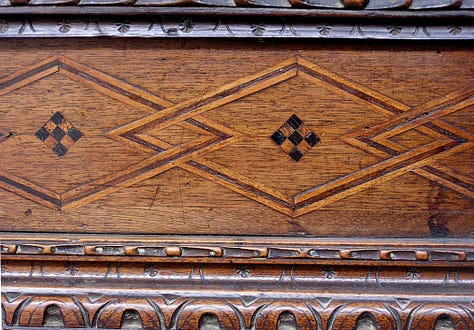
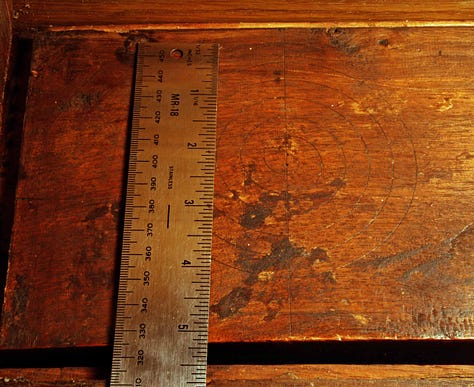
My old blog has a photo sequence (and a basic video) of carving something like this arcading pattern. https://pfollansbee.wordpress.com/2019/12/31/carved-arcading-photo-sequence/








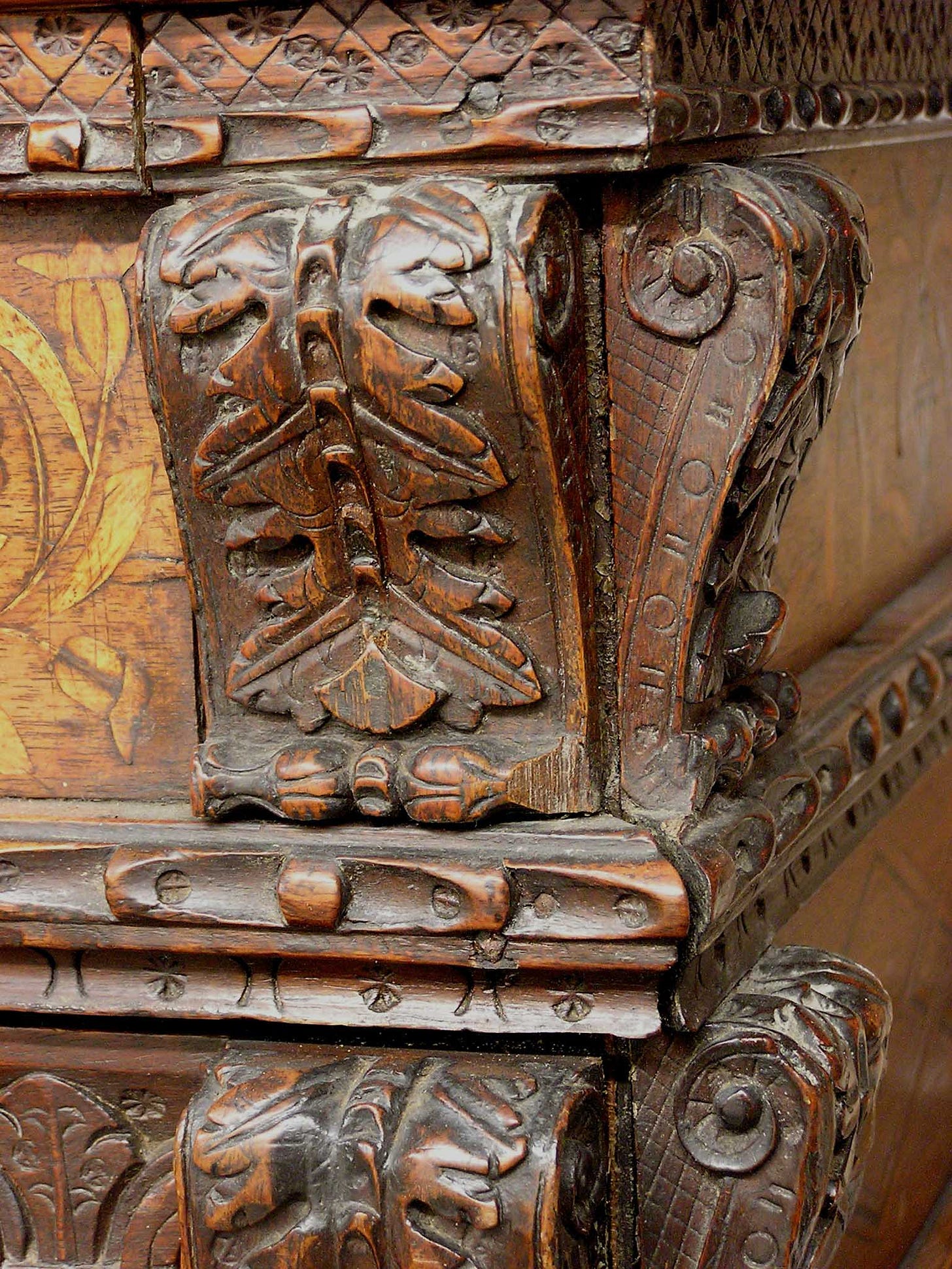

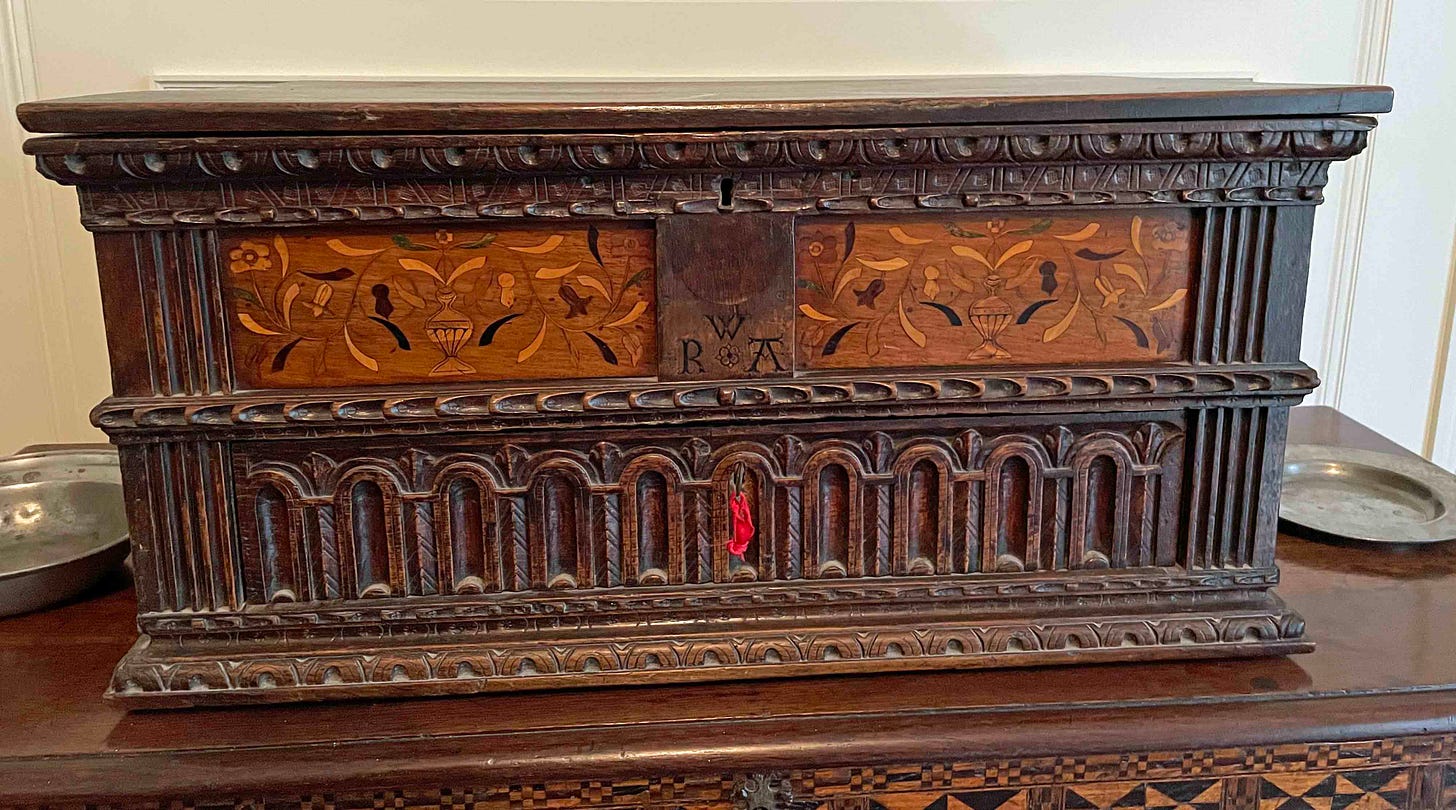
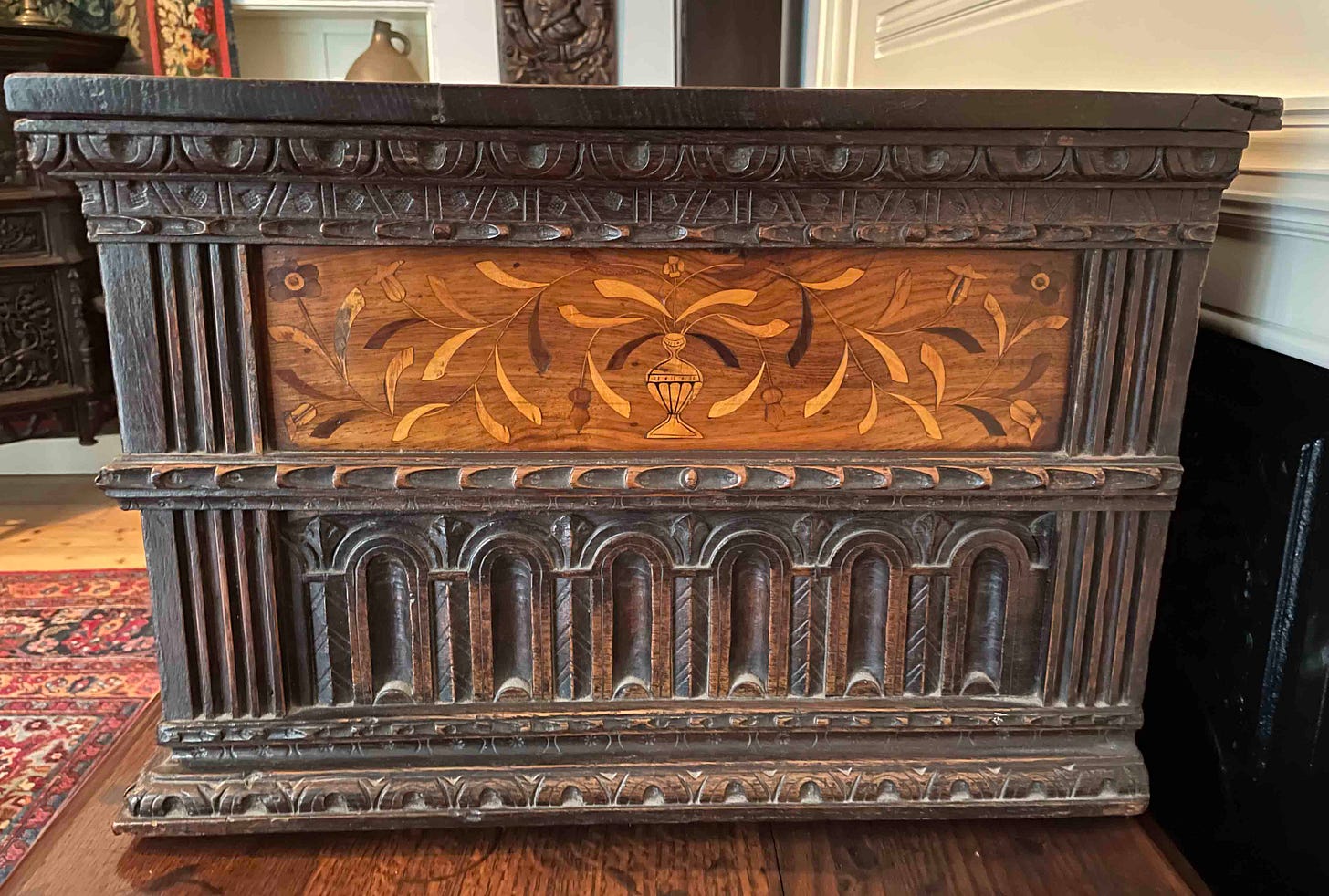
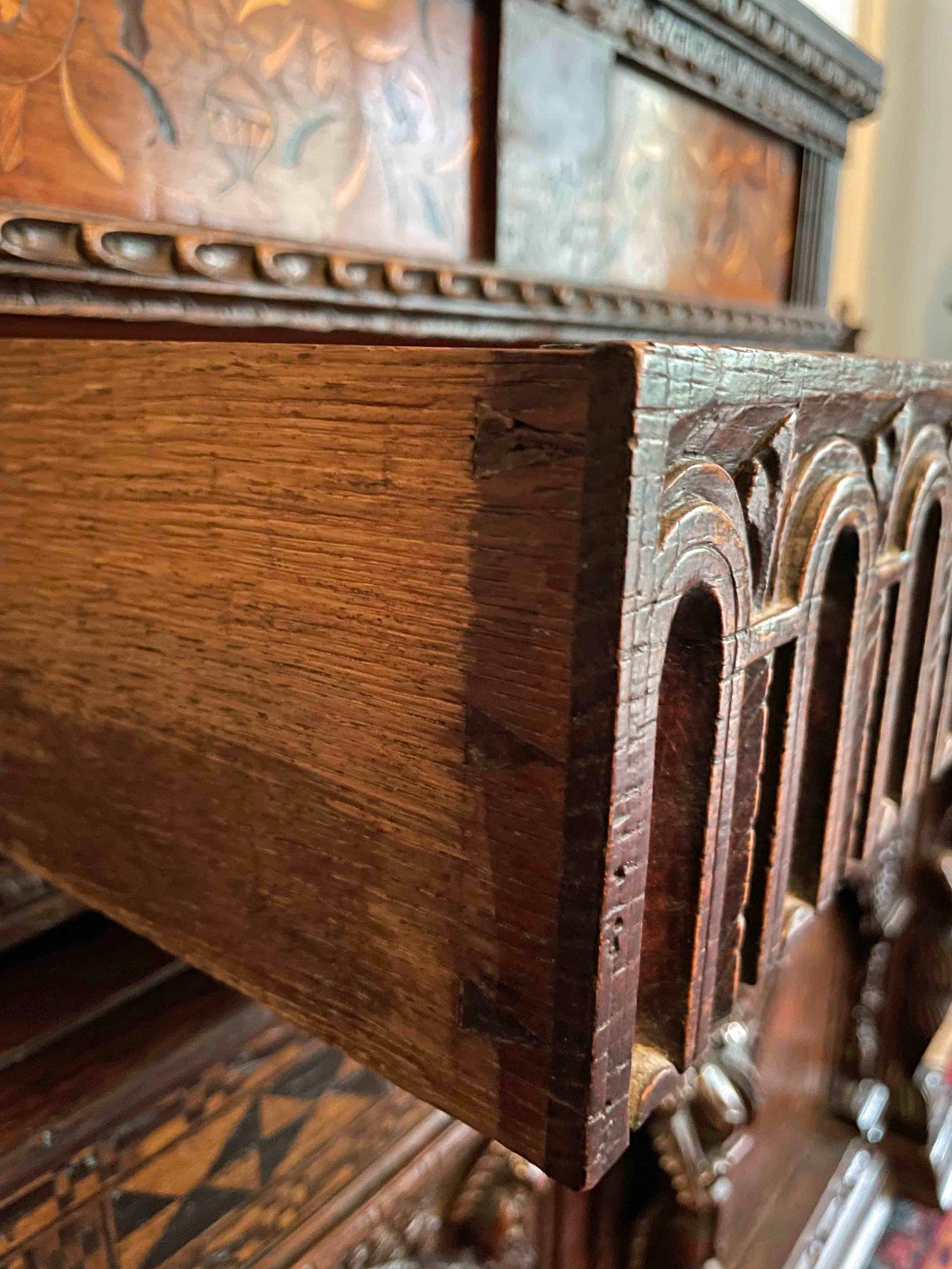
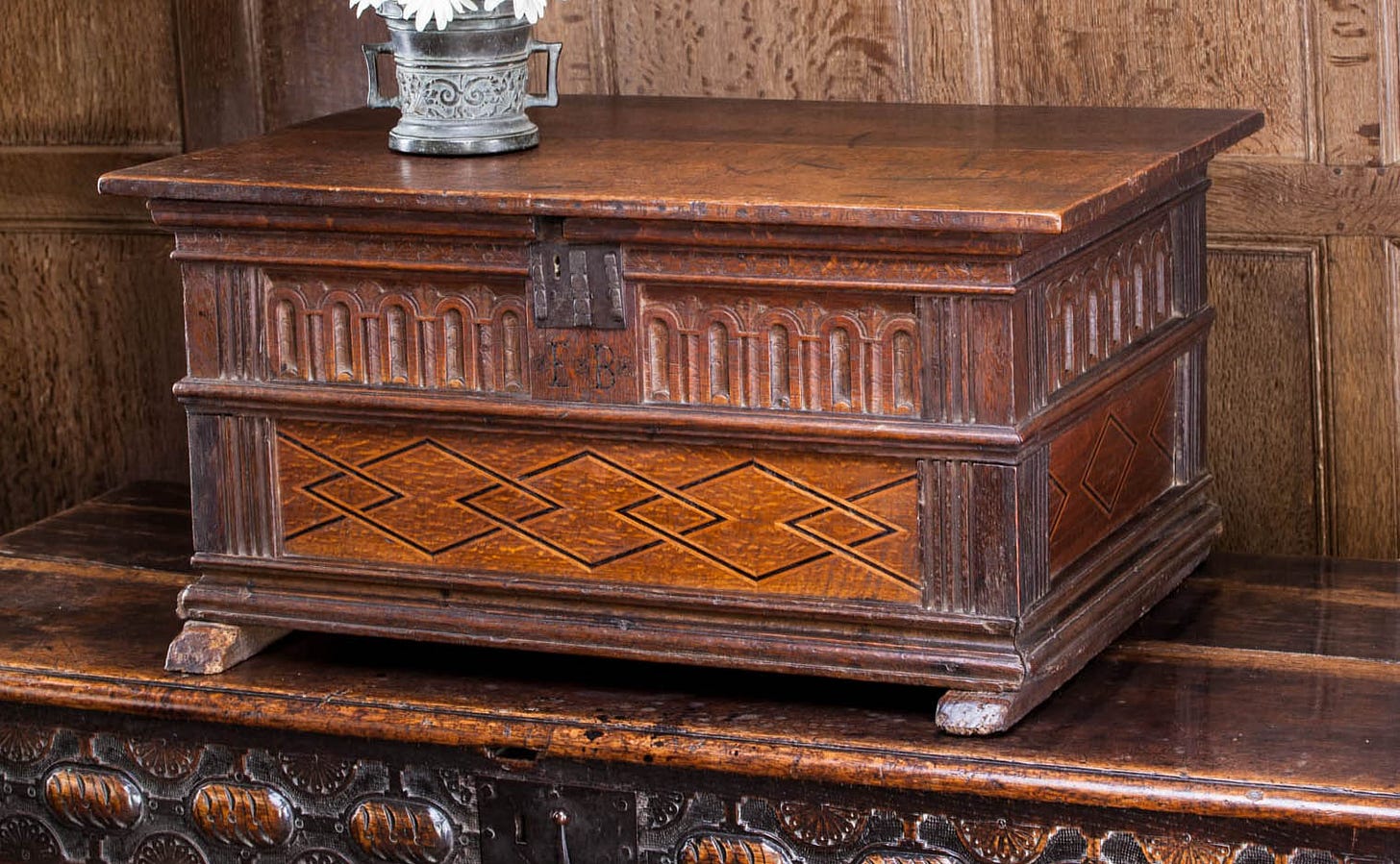

Beautiful pics, thanks, Peter. The related box you reference with the carving on the box and inlay on the drawer appears to have sled feet on it like you see on some old furniture pieces to keep them off damp floors (easy to replace feet vs the whole bottom of the piece). How common were the sled feet and any idea why the builder used that or just one of those things? Thanks.
Amazing pieces, Peter. Thank you for sharing.